Bible History Online
This site features a cornucopia of information that helps put the people, places, events and cultures of the Bible into proper historical context. Learn about the ancient world, Egypt, Assyria, Babylon, Greece, Persia, Israel, Rome and more. Peruse maps and artwork; explore manners and customs; learn about weapons and warfare; and gain insight into ancient languages.
The COVID-19 Pandemic
The coronavirus that spread around the world in 2020 is one of the most significant events in modern church history. It led to the cancellation of weeks and in some cases months of in-person studies and services. Many churches shifted their classes, worship services, gospel meetings, vacation Bible schools and other special services online. The Bible Study Page tracked much of this activity in 2020-21, creating compilations to pandemic-related sermons, articles and livestreams by churches.
Church History: A Biblical View
Church history is divided into six distinct eras at this website — the Apostolic Age (30-100 AD), Ante-Nicene Age (100-325), Nicene Age (325-600), Middle Ages/Dark Ages (600-1500), Protestant Reformation Age (1500-1600) and Modern Age (1600-2000). The topics within those categories range from Gnosticism and the Catholic Church to the Crusades and Pentecostalism.
Church History, PowerPoint Charts
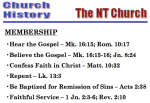 Andy Alexander produced this nine-part series of PowerPoint presentations about church history. The series covers the founding of the New Testament church, the prediction of and descent into apostasy, the rise of denominations during the Protestant Reformation, the Restoration Movement and apostasies that followed the Restoration.
Andy Alexander produced this nine-part series of PowerPoint presentations about church history. The series covers the founding of the New Testament church, the prediction of and descent into apostasy, the rise of denominations during the Protestant Reformation, the Restoration Movement and apostasies that followed the Restoration.
 Fox’s Book of Martyrs
Fox’s Book of Martyrs
John Fox, an English historian, authored this encyclopedia of martyrs and religious leaders of Christendom in 1563. Originally published under the title Actes and Monuments but more commonly known as Fox’s Book of Martyrs, it influenced Catholicism in England and Scotland. John Calvin, Martin Luther, William Tyndale and others are profiled in the book.
Guide to Early Church Documents
The content here falls into eight categories: 1) New Testament canonical information; 2) writings of the apostolic fathers; 3) patristic texts; 4) creeds and canons; 5) later documents; 6) related documents; 7) miscellaneous texts; and 8) relevant Internet sites. Although several of the links are broken, the site is still a good starting point for identifying the names of past religious leaders and their key writings.
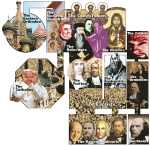 The Hall of Church History
The Hall of Church History
This map to online historical resources about Christianity will lead you to information about church fathers, Catholics, reformers, Puritans, Baptists, cultists and more. The site also includes links to information about Medieval churches and the Eastern Orthodox religion, as well as to various religious creeds.
Continue reading →

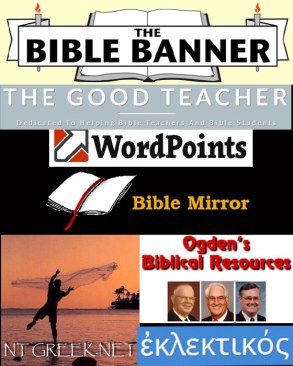 —
— 
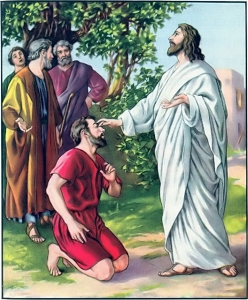



 The New Testament church exists in two senses: 1) the overall body of Christ that includes all saints around the world, from all time; and 2) the individual assemblies of Christians who worship and work together for periods of time in specific locations. In both forms, the people are the church.
The New Testament church exists in two senses: 1) the overall body of Christ that includes all saints around the world, from all time; and 2) the individual assemblies of Christians who worship and work together for periods of time in specific locations. In both forms, the people are the church.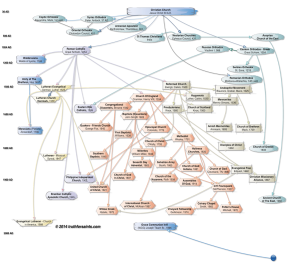
Commentaries
Commentaries include the uninspired reflections of men who often read the Bible through their own preconceived filters based on their religious backgrounds. This list includes commentaries by denominational founders and religious scholars who may lack a complete understanding of the gospel truth. Consider their views carefully in the context of the actual Word of God. For more detailed insights into the value of commentaries, download Chris Reeves’ PowerPoint presentation “Commentaries: Their Use and Abuse.”
Complete Bible
Commentary Critical and Explanatory on the Whole Bible
Robert Jamieson, A. R. Fausset and David Brown published their commentary in 1871. It is commonly known as the Jameison-Faussett-Brown Commentary. StudyLight describes it as “a detailed, yet not overly technical, commentary of the Bible that holds to the historic teachings of orthodox Christianity.”
A British Methodist theologian, Adam Clarke took 40 years to complete his commentary on the Bible. He wrote nearly 1,000 pages in the original eight volumes, which reinforced the teachings of Methodist founder John Wesley. Clarke’s commentary played a central role in Methodist theology for two centuries.
Explanatory Notes upon the Old and New Testaments
John Wesley, who along with his brother Charles founded the Methodist movement, turned to writing about the Bible when he was too sick to travel and preach about it. Wesley tackled the New Testament first, publishing his Calvinistic interpretation of it in 1755 and supplementing that commentary with his notes on the Old Testament in 1765.
Most Bible scholars know this six-volume collection by its informal title, Matthew Henry’s Complete Commentary. Henry started writing it in 1708 and only made it to Acts by the time he died in 1714. Scholars who shared his Presbyterian worldview finished the work. The abridged version, Matthew Henry’s Concise Commentary, is contained within one volume.
English Baptist John Gill, an adherent of Calvinism, penned separate commentaries on the testaments between 1746 and 1763. He started with three volumes of discussion about the New Testament and later added six more volumes on the Old Testament.
Continue reading →